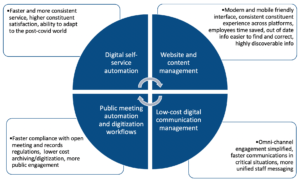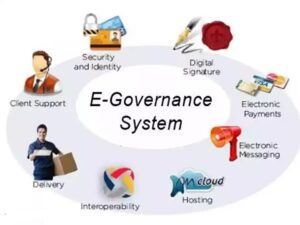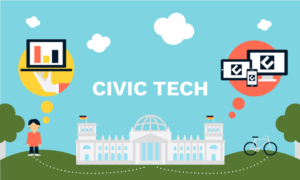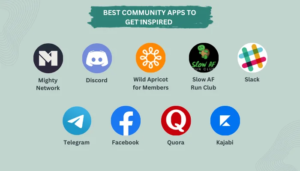Introduction:
In an increasingly digital world, technology is reshaping how citizens interact with their governments and participate in civic life. From social media platforms to online voting systems, technological innovations are making it easier for people to stay informed, engage with public policy, and contribute to their communities. This blog explores how technology enhances civic engagement and participation, highlighting key tools and trends that are driving this transformation.
In the digital age, technology has become an indispensable tool for fostering civic engagement and participation. By bridging the gap between citizens and their governments, technology empowers individuals to be more informed, active, and involved in their communities.
The Digital Transformation of Civic Engagement:

In recent years, the landscape of civic engagement has undergone a profound transformation, driven largely by advancements in digital technology. This shift has opened up new avenues for citizens to participate in public life, influence policy decisions, and hold their governments accountable.
- Social Media and Communication Platforms:
Social media has revolutionized the way people access information and engage in public discourse. Platforms like Twitter, Facebook, and Instagram allow citizens to follow government agencies,
Social media platforms have become powerful tools for civic engagement. They enable real-time communication and mobilization, making it easier for citizens to participate in public discussions and advocate for causes they care about.

Examples and Impact:
- Hashtag Activism: Campaigns like #BlackLives Matter and #FridaysForFuture have used hashtags to raise awareness, mobilize supporters, and drive global movements for social justice and environmental sustainability.
- Direct Communication: Public officials and government agencies use social media to share updates, solicit feedback, and engage directly with citizens, fostering a more interactive and responsive governance model.
- Online Petitions and Crowdsourced Campaigns
The internet has democratized the petitioning process, allowing individuals to gather support for various causes and issues efficiently. Online platforms provide the infrastructure for creating and disseminating petitions widely.
Examples and Impact:
- org and Avaaz.org: These platforms have enabled millions of people to sign petitions and bring about significant policy changes and corporate reforms. Successful campaigns range from environmental protection initiatives to social justice causes.
- Crowdsourced Advocacy: Websites like GoFundMe enable citizens to fundraise for community projects, legal battles, and social causes, demonstrating the power of collective financial support in driving change.
- E-Government Services and Digital Portals:
E-government initiatives streamline interactions between citizens and government services, enhancing accessibility and efficiency. Digital portals offer a centralized location for accessing a variety of public services and information.

Examples and Impact:
- Estonia’s E-Government: Estonia’s e-Residency program and digital ID system allow citizens and non-citizens alike to access a wide range of services online, including voting, banking, and company registration, showcasing a model of digital governance.
- Public Feedback Systems: Many local governments have implemented online portals where citizens can provide feedback on public services, participate in consultations, and engage in decision-making processes.
- Civic Tech and Open Data Initiatives:
Civic technology, or civic tech, encompasses tools and platforms designed to facilitate greater public participation in governance. Open data initiatives provide transparency and empower citizens to analyze and use public data.

Examples and Impact:
- Open Data Portals: Platforms like Data.gov in the United States and the European Data Portal offer extensive datasets on various topics, enabling citizens, researchers, and developers to create applications and solutions that address public issues.
- Participatory Platforms: Tools like Decide Madrid and CitizenLab facilitate citizen participation in policy-making and budgeting processes, allowing residents to propose, discuss, and vote on community projects.
- Mobile Apps for Community Reporting:
Mobile applications and participatory platforms are making it easier for citizens to engage in local governance and community activities. Apps like SeeClickFix allow residents to report local issues, such as potholes or graffiti, directly to municipal authorities, enhancing responsiveness and accountability.

Mobile applications have made it easier for citizens to report issues, participate in local governance, and stay informed about community developments.
Examples and Impact:
- SeeClickFix: This app allows residents to report non-emergency issues like potholes and graffiti directly to local authorities, enhancing responsiveness and accountability.
- Nextdoor: A neighborhood-based social network that helps residents communicate about local issues, organize events, and share resources, fostering a sense of community and collective action.
- Blockchain and Secure Voting Systems:
Online voting systems are being explored and implemented in various parts of the world to increase voter turnout and accessibility. Blockchain technology, with its potential for secure and transparent transactions, is being tested to enhance the security and integrity of online voting processes.
Blockchain technology is being explored for its potential to enhance the security and transparency of voting systems, making elections more accessible and reliable.

Examples and Impact:
- West Virginia Blockchain Voting Pilot: In 2018, West Virginia piloted a blockchain-based mobile voting app for military personnel stationed overseas, demonstrating the potential of secure digital voting to increase accessibility for remote voters.
- Blockchain for Transparency: By providing an immutable record of votes, blockchain can help ensure the integrity of electoral processes and build public trust in democratic systems.
- Virtual Town Halls and Digital Public Meetings
The COVID-19 pandemic accelerated the adoption of virtual town halls and public meetings, making it possible for more citizens to participate in discussions and engage with public officials from the comfort of their homes.
Examples and Impact:
- Zoom Town Halls: Many governments and organizations transitioned to virtual town halls during the pandemic, using platforms like Zoom to maintain public engagement and facilitate dialogue on important issues.

- Webinars and Online Forums: These digital formats allow for broader participation, especially for individuals who might face barriers to attending in-person events, such as geographic distance or time constraints.
Conclusion:
The digital transformation of civic engagement has created a more inclusive and participatory landscape, where citizens can engage with their communities and governments more easily and effectively. As technology continues to evolve, it will be crucial to address challenges related to digital literacy, access, and security to ensure that these tools benefit all members of society. By embracing these innovations, we can foster a more informed, connected, and active citizenry, driving positive change in our communities and beyond.

